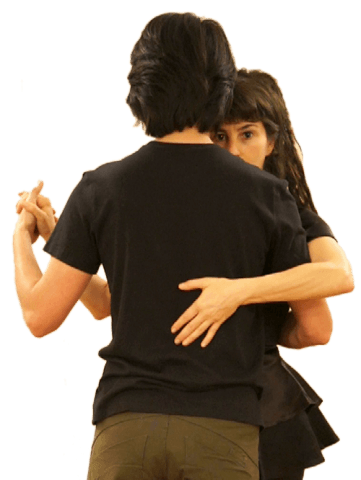TangoForge has always been about trying to understand Argentine Tango. Why anyone would want to do it? Why I’m still doing it? This month I’ve taken tested all my shibboleths with loving fire, and let most of them go. I’ve gone to milongas trying to understand why tango dancing is making people so goddamn happy.
I have a bias, which is that I do not believe people really choose self-destruction. (A yogi told me the other day that smoking can be understand as a way of connecting with the breath, so there you have it.) As retrograde and 50-Shades as tango can be, I am committed to finding how we are in fact reaching for something liberating. And I think I may have found it.
 In 1990 Mihály Csíkszentmihályi wrote a research book called Flow, which has now become a common psychological concept. Flow is a measurable degree of absorption in action in such a way that the actor loses track of time, distractions, and even sometimes physical needs such as food. The exciting aspect of this discovery is the recognition of the pleasure which arises from the experience of full concentration and absorption.
In 1990 Mihály Csíkszentmihályi wrote a research book called Flow, which has now become a common psychological concept. Flow is a measurable degree of absorption in action in such a way that the actor loses track of time, distractions, and even sometimes physical needs such as food. The exciting aspect of this discovery is the recognition of the pleasure which arises from the experience of full concentration and absorption.
Obviously Flow is a desirable and now sought-after state. I think Argentine Tango dancing compels us to Flow. This is why it is so satisfying. When we dance, we are using intensely multiple dimensions of our being: not only physical, but also intellectual and emotional. And we can’t check out or become distracted because another person is so closely attentive. It is the aspect of mutual concentration which compels us and keeps us in the state of Argentine Tango Flow.
Flow is the simultaneous experience of:
- Intense and focused concentration on the present moment
- Merging of action and awareness
- A loss of reflective self-consciousness
- A sense of personal control or agency over the situation or activity
- A distortion of temporal experience, one’s subjective experience of time is altered
- Experience of the activity as intrinsically rewarding, also referred to as autotelic experience
In addition, Flow involves:
- Immediate feedback
- Feeling that you have the potential to succeed
- Feeling so engrossed in the experience, that other needs become negligible
Tango Dancing Flow
There are three important ways we can apply Flow to our understanding of Argentine Tango:
The first is in our holy grail to make tango dancing popular. We need to abandon advertisements of “intimacy” (with strangers!?) and the overwrought clichés of passion and link up with popular psychological goals: presence, immediacy, and intrinsic rewards.
The second is in student retention. The “basics” of Argentine Tango are very demanding and hard for new dancers to appreciate. Our emphasis on these elements often discourages and bores the students. We should develop direct explanatory links between tango rigors and achieving Flow.
The third is to address the dropoff of access to Flow in advanced dancers. I believe we can do this by helping people to get beyond level and seduction in their tango dancing agenda and re-focus on intensive real improvisation, which increases the demand for mutual concentration. This will affect our choice of partners.
I’ll be developing these proposals in later posts.
If you’re interested to learn more about Flow, Csíkszentmihályi has subsequently proposed that Flow is related to happiness, creativity, overcoming boredom and anxiety, achieving optimal performance, and good business.
Here he is:














